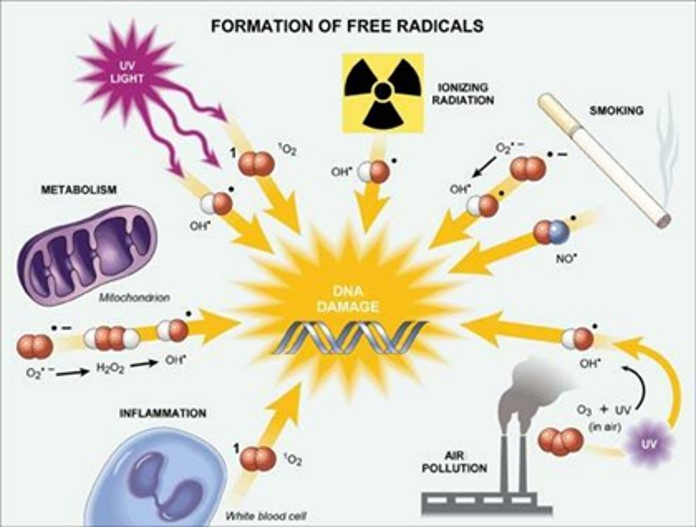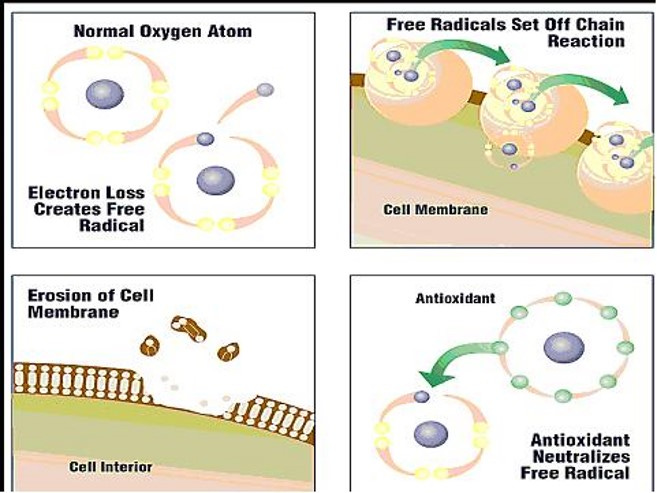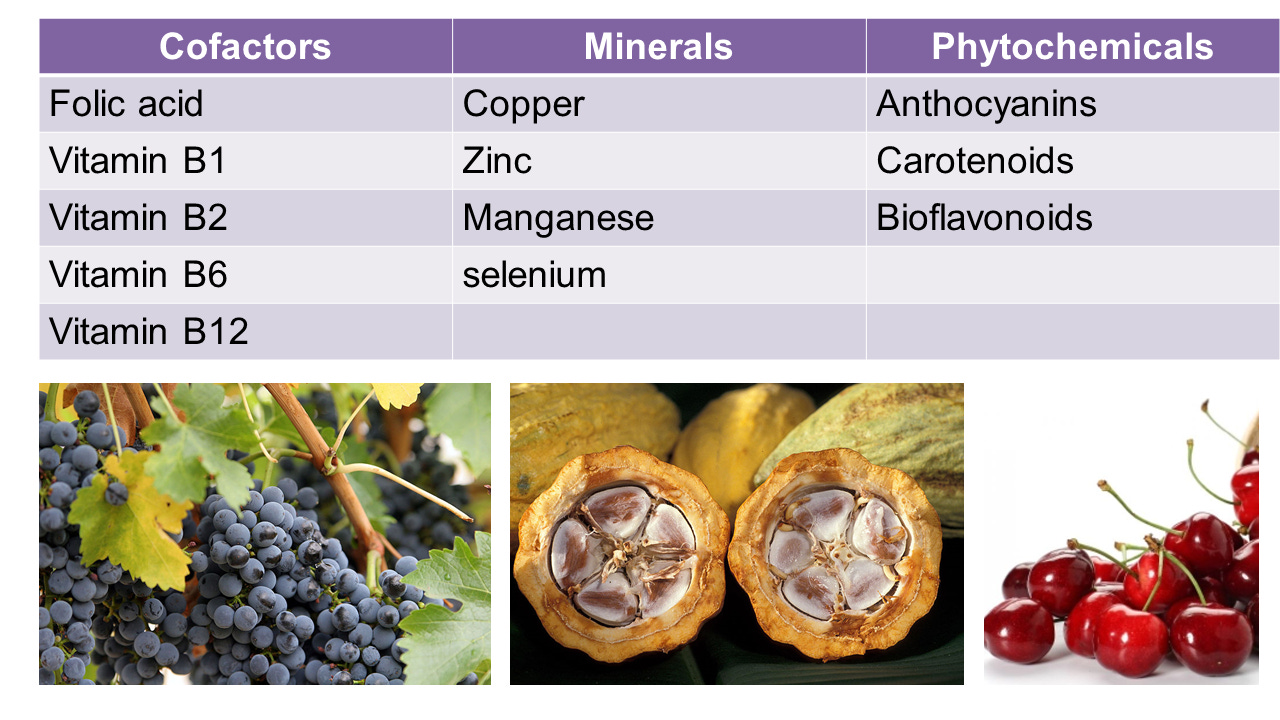Antioxidants: What are they and why do we need them?
Many "superfoods" are marketed by touting the antioxidant content of the product. But, what are antioxidants and can they really reduce damage from free radicals?
You might have come across the term "antioxidant" in the context of health food marketing or when hearing about "superfood" smoothies and veggie-grain bowls. However, do you truly understand what an antioxidant is and whether it can benefit your health? In this newsletter issue, I delve into key subjects to help you understand how to mitigate oxidative damage and pinpoint sources of both fat-soluble and water-soluble antioxidants in your diet. The topics covered include:
What are reactive oxygen species and how do they contribute to oxidative stress?
What is oxidative stress and what are the consequences for your health?
What are antioxidants and how do they impact your health?
What are some dietary sources of antioxidants?
Let’s start with the basics
Before exploring dietary sources of antioxidants, let's first clarify some terms. This will help us better understand what causes the damage (reactive oxygen species) and the role and function of antioxidants.
What is a free radical?
Free radicals are a type of reactive oxygen species (ROS). They are defined as being “an uncharged molecule (typically highly reactive and short-lived) having an unpaired valence electron.” In other words, they are chemically unstable (reactive) molecules that can cause damage to surrounding cells by a chemical chain reaction.
Our body naturally makes free radicals during everyday activities. They are released as a natural consequence of energy production in the mitochondria (energy powerhouses) of our cells. But, we can also get them in excess from environmental exposure to things like pollution, UV radiation, heavy metals, ionizing radiation, alcohol, smoking, and some chemicals. The consumption of added sugars in the diet can also result in free radicals and lead to oxidative stress, thus increasing risks for a number of chronic diseases.
Examples of reactive oxygen species (ROS) include superoxide radicals (O2•−), hydrogen peroxide (H2O2), hydroxyl radicals (•OH), and singlet oxygen (1O2). These harm our bodies in several ways:
They can damage our DNA.
They can destroy the good fats in our cells (lipid peroxidation).
They can change the building blocks of our proteins.
They can stop certain enzymes from working by altering their helper components.
But, ROS aren’t always bad! Indeed, our immune system uses free radicals to help fight infection. The problems arise when we become overloaded with an unnatural imbalance in these reactive oxygen species, leading to a state of oxidative stress, in which our bodies are on constant alert and in a state of chronic inflammation.
Oxidative stress is a phenomenon caused by an imbalance between production and accumulation of oxygen reactive species (ROS) in cells and tissues and the ability of a biological system to detoxify these reactive products.
A substantial amount of scientific research indicates that oxidative stress can contribute to the development and progression of diseases such as atherosclerosis, cancer, metabolic disorders, cardiovascular diseases, and diabetes. It's also linked to the aging process. This is evident in the skin of long-term smokers or heavy drinkers; their skin often appears more aged than that of non-smokers in the same age group, with more wrinkles and discoloration. Furthermore, due to prolonged oxidative stress, they are at a significantly higher risk of cancer.
What is an antioxidant?
Antioxidants are substances that prevent oxidation from other molecules and can protect your cells from ROS. Antioxidants are frequently added to food products to reduce the rate of product degradation. We can classify antioxidants into two general groups: endogenous antioxidants and exogenous antioxidants.
Endogenous antioxidants are antioxidants produced in your body. ROS are produced as a natural consequence of energy metabolism in our body, but our cells have means of keeping these in check through the action of certain enzymes.
Exogenous antioxidants are antioxidants that can be taken in through the diet (exo = outside; endo = inside). This refers to certain minerals and plant phytochemicals.
Antioxidants protect our cells by neutralizing free radicals and stopping the chain reaction of damage to our cell membranes, proteins, and DNA.
Examples of Exogenous (Dietary) Antioxidants
Plants abundant in polyphenols offer a fantastic source of antioxidants. Consider, for instance, the polyphenolic antioxidants found in various plants and fruits: blackberries are rich in anthocyanins, grapes and cocoa are also packed with these beneficial compounds. Blueberries, pomegranates, and strawberries contribute to this list, as do tomatoes with their lycopene content. Additionally, turmeric stands out with its curcumin component. Each of these not only adds flavor and variety to our diet but also provides essential health benefits.
Different antioxidants can reach different parts of your body due to their solubility. To get the most out your dietary intake, shoot for a balance in lipid-soluble and water-soluble antioxidants.
Certain vitamins and minerals also act as antioxidants.
Eat the rainbow
You may have heard about the concept of “eating the rainbow” on your plate. What does this actually mean? Plant phytochemicals (the chemical signals of plants) are responsible for the taste, flavor, aroma, and color of our foods. By “eating the rainbow,” you are targeting different groups of plant phytochemicals. One such group of phytochemicals that yields potent antioxidant health benefits are the anthocyanins. Anthocyanins are a type of polyphenolic molecule which can donate pieces of their molecular structure to reactive, unstable ROS without becoming reactive themselves. Anthocyanins often yield a deep red, blue, purple, or even black color to plants. Thus, a simple rule of thumb to follow when looking for anthocyanin-rich foods is to keep an eye out for these deep colors in the produce aisles of your grocery store. Here is a breakdown of some common anthocyanin rich foods, with their relative amounts (mg of anthocyanin per 100 g of the fruit or vegetable.
The Takeaway
You don't need to splurge on expensive "superfoods" to get potent antioxidants from your diet. In fact, many processed "health foods" might diminish the antioxidant benefits due to added sugars and preservatives that can increase ROS production.
For the best antioxidant benefits, incorporate a variety of dark orange, red, purple, and black whole fruits and vegetables into your meals. It's also crucial to minimize exposure to factors that boost ROS production. No amount of blackberries or eggplants can counteract the ROS produced by smoking or consuming a diet heavy in processed foods with added sugars. Remember, health is about balance. Always weigh your exposures to ROS-inducing factors against the intake of ROS-neutralizing antioxidants.
Yours in health, Dr. Quave
Cassandra L. Quave, Ph.D. is a scientist, author, speaker, podcast host, wife, mother, explorer, and professor at Emory University School of Medicine. She teaches college courses and leads a group of research scientists studying medicinal plants to find new life-saving drugs from nature. She hosts the Foodie Pharmacology podcast and writes the Nature’s Pharmacy newsletter to share the science behind natural medicines. To support her effort, consider a paid or founding subscription, with founding members receiving an autographed 1st edition hardcover copy of her book, The Plant Hunter.
Reader Survey
I'd love to learn more about what you, as readers, would like to see in future content! Three participants will be randomly selected to receive a complimentary one-year paid subscription—a $50 value! The survey will remain open until October 15th.
Available in hardcover, paperback, audio, and e-book formats! Translated editions now available in Mandarin and Japanese!











